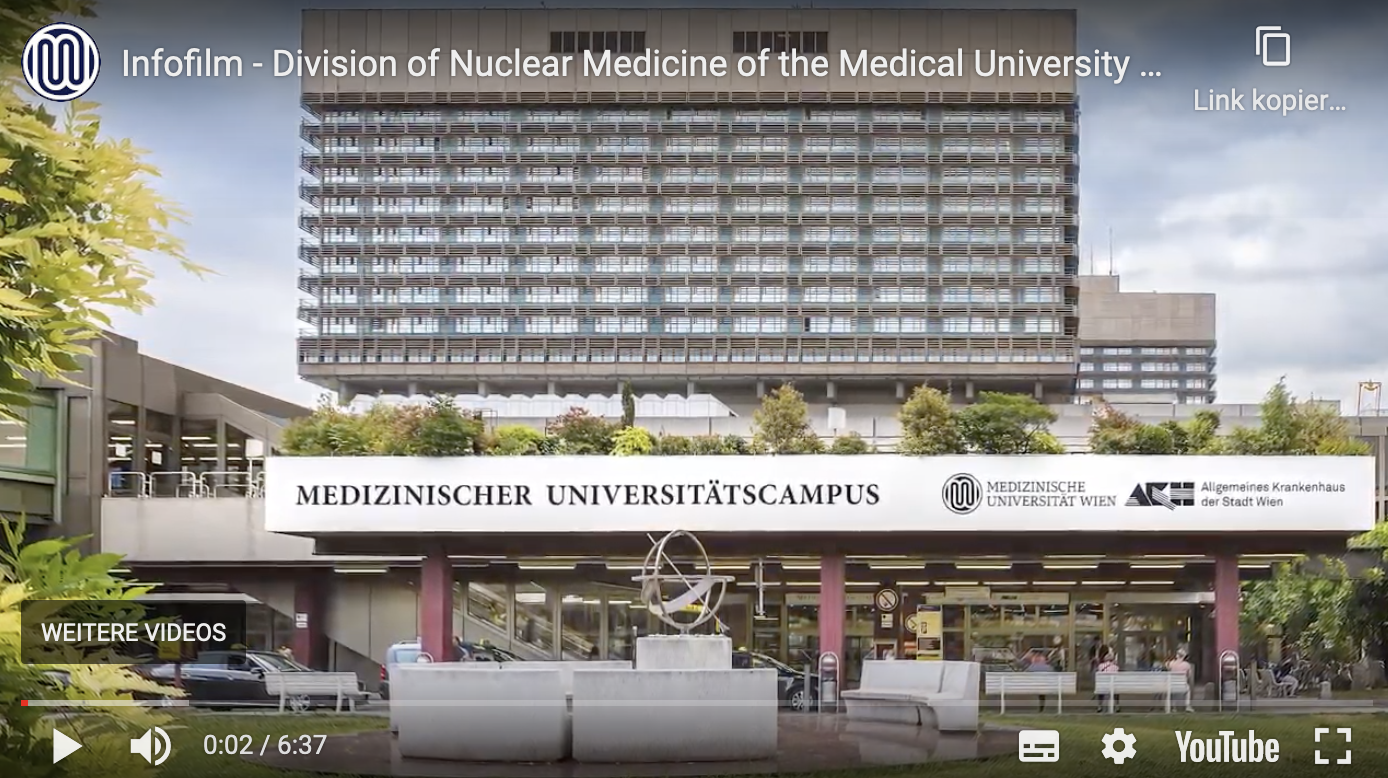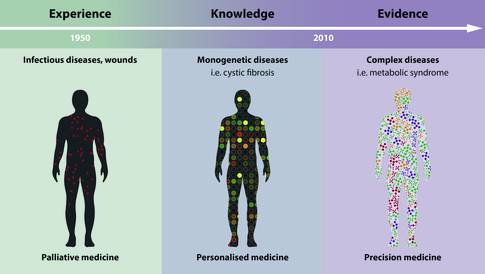Nuclear medicine contributes to advancing the treatment of complex diseases.
Nuclear medicine is a multidisciplinary specialty that develops and utilizes instrumentation and radiopharmaceuticals to provide crucial quantitative functional information about normal tissues or disease states in living subjects. In a nuclear medicine scan, a radiopharmaceutical is administered to study physiological processes and to diagnose, stage, and treat diseases non-invasively.

After activation, data will be sent to YouTube. Further information here: Data protection
Positron emission tomography (PET) generates a three-dimensional image of the radionuclide distribution and makes use of the unique decay physics of positron-emitting radionuclides. The radiopharmaceutical sugar compound fluorine-18-fluorodeoxyglucose (FDG), for example, recognizes differences in glucose consumption. It is widely used in cancer diagnostics, as dividing cancer cells consume significantly more glucose than healthy cells.
Single-photon emission computed tomography (SPECT) provides three-dimensional images of gamma-emitting radionuclides such as technetium-99m, iodine-123 and thallium-201. SPECT is used extensively to study heart health and blood flow to various organs, including the brain.
If you are interested in multidisciplinary research with a clear vision for translating your findings into clinical practice, the Department of Nuclear Medicine may offer you excellent opportunities. Please explore our research portfolio and inquire directly with one of our principal investigators about current opportunities. We very much welcome applications from highly motivated individuals with a strong track record and the ambition to advance their academic career.
Modern Medicine
Modern medicine has shifted from an experience-based approach to an evidence-based one, supported by increasingly complex diagnostics, including genomic and imaging techniques. We have entered the era of precision medicine, which aims to restore health by targeting specific molecular lesions with tailored therapeutics. However, complex diseases continue to challenge medicine, and nuclear medicine plays a crucial role in making personalized medicine a reality.
Precision Medicine
Genetic and molecular analyses have revealed that seemingly similar diseases can contain multiple distinct subtypes. Therefore, medical decisions should be tailored to each patient rather than relying on a "one-drug-fits-all" model. Many diseases have various therapeutic options that target different molecular vulnerabilities, and the challenge lies in developing diagnostic pipelines to reliably match patients with the appropriate medication.
For such a personalized approach, specific molecular MRI probes are invaluable, making molecular imaging the method of choice for personalized treatment planning. However, current expertise, techniques, and evidence do not yet fully integrate molecular PET and SPECT imaging for detailed patient selection and therapy adjustment. Bridging this gap is a focus of ongoing clinical and preclinical research at the Department of Nuclear Medicine at MedUni Vienna.
Medical Physics
The increasing complexity and power of imaging devices require an active interdisciplinary environment involving clinicians and scientists. Nuclear medicine, in particular, offers physicists a wide range of opportunities to contribute significantly to research progress and patient care improvement. The strong scientific engagement of the clinical department with research staff provides the environment for advancing nuclear medicine imaging technologies with the goal of better integrating them into clinical decision-making.
Computational Approaches
Rapid advancements in computer technologies are driving the development and application of medical imaging technologies. Artificial intelligence (AI) technologies, such as machine learning (ML), are already revolutionizing medical imaging with enhanced productivity and accuracy. Currently, ML is used to analyze labor-intensive histological analyses, successfully improving disease diagnosis by medical professionals. This work has shown that current diagnostics produce complex datasets with unresolved information that can be explored with computational tools. Therefore, we are actively exploring with our partners how computational approaches to analyzing multidimensional patient data, including PET images, can support clinical decision-making and improve patient stratification.

